
Term in Review – ‘Triffic Thursday
This term we delved a little into Space, truly it is such a vast topic.
The best books we found on the topic were by Seymour Simon. The information is fascinating and informative and the layout with eyecatching pictures makes his books an enjoyable read.

The Stars
The Sun
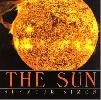
and Destination: Jupiter

gave us our introduction. For studying the moon we read So That’s How the Moon Changes Shape!- Allan Fowler for the little ones and picture books The Sea of Tranquility by Mark Haddon and I Wish I’d Gone to the Moon with Neil Armstrong- Leonie Young.
Along with these we used Dinah Zikes’s Great Science Adventure, The World of Space

I have tried Dinah Zike’s Great Science Adventure’s before and gave up in frustration. I nearly gave up again put persisted. Those little science books are painful! There is simply no-way to get the lines to photocopy correctly, so I gave up and just read from the main book. Admittedly the information is very basic but we covered more by using Seymour Simon books.
This time I preserved a little more with Dinah’s Graphic Organizer’s, her different folds and notebooking pages which create a fantastic visual impact. A few issues cropped up in the course of using this method; the children don’t listen well, and had trouble following directions. The approach ended up being a good lesson in these areas. The children were very happy with their written results and became quite creative in the end.
I also found Dinah’s science experiments useful, basic but pertinent. Simply put, for where I am at present, not wanting to design a unit from scratch these books were a good, basic jumping off point.
Oh and I also added a number of picture books from the library for the little ones. Some better written than others. Under the Harvest Moon- Stella Gurney, Star Climbing- Lou Fancher, I Took the Moon for a Walk- Carolyn Curtis, Kitten’s Full Moon- Keving Henkes, and The Star who fell out of the Sky- Ian Robinson.
I include some photo highlights:
 When studying the Sun the children enjoyed melting chocolate with a magnifying glass. Honestly the smell was awful, but they managed to melt a little of the plastic too.
When studying the Sun the children enjoyed melting chocolate with a magnifying glass. Honestly the smell was awful, but they managed to melt a little of the plastic too.
To see the moon’s reflection we covered a mirror with hand cream and studied it in a darkened room (the room wasn’t dark enough so the children squeezed into the cupboard) then we shone the torch onto the mirror to see the reflection.
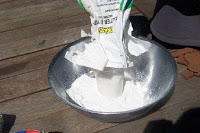
We also observed the impact of crater’s on the moon. We mixed two cups of plaster of paris with water to make a thick consistency.
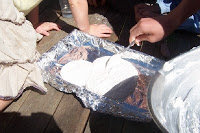
I was pretty pleased that I remembered to line the tray with foil, it made clean up a whole lot easier.

We then flung the rock in which represented the meteorite.
When studying Jupiter we simulated the stormy surface of this planet.

We poured milk into a bowl and added drops of drops of red and yellow food colouring on opposite ends of the milk.

We then swished the mixture around, added a drop of dishwashing liquid and gently spun the bowl. This gave us an idea of the stormy surface of Jupiter.
It worked well to set aside a whole day for the study of science as so often this area is missed around here, blush. Although as the children are interested in all things scientific they have a fair amount of knowledge despite lacking in a formal approach.



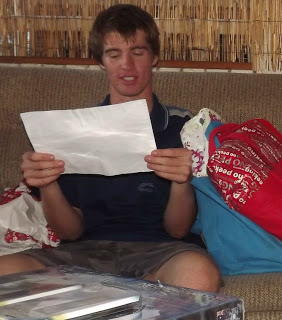

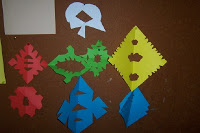
3 Comments
enjoy-rs
All online game’s gold pieces supplied on site:
runescape gold
buy runescape gold
cheap runescape gold
runescape money
buy runescape items
runescape items
runescape accounts
runescape power leveling
runescape powerleveling
cheap runescape gold
runescape money
buy runescape items
runescape items
runescape accounts
runescape power leveling
runescape powerleveling
cheap runescape gold
runescape items
runescape accounts
buy runescape accounts
cheap runescape accounts
runescape power leveling
rs2
runescape 2
Runescape weapons
runescape lvl
buy runescape gp
runescape items
runescape accounts
runescape power leveling
dofus kamas
dofus gold
dofus items
dofus jol
MapleStory Mesos
mabinogi gold
buy mabinogi gold
cheap mabinogi gold
mabinogi money
warhammer gold
warhammer items
warhammer accounts
warhammer videos
warhammer money
warhammer power leveling
warhammer powerleveling
warhammer cd key
warhammer time cart
our websites is an professional store for runescape,warhammer online,mabinogi,dofus games gold,items,money,accounts,powerleveling,questqoint,runes and some other goods with fast delivery and world class service
enjoy-rs
All online game’s gold pieces supplied on site:
runescape gold
buy runescape gold
cheap runescape gold
runescape money
buy runescape items
runescape items
runescape accounts
runescape power leveling
runescape powerleveling
cheap runescape gold
runescape money
buy runescape items
runescape items
runescape accounts
runescape power leveling
runescape powerleveling
cheap runescape gold
runescape items
runescape accounts
buy runescape accounts
cheap runescape accounts
runescape power leveling
rs2
runescape 2
Runescape weapons
runescape lvl
buy runescape gp
runescape items
runescape accounts
runescape power leveling
dofus kamas
dofus gold
dofus items
dofus jol
MapleStory Mesos
mabinogi gold
buy mabinogi gold
cheap mabinogi gold
mabinogi money
warhammer gold
warhammer items
warhammer accounts
warhammer videos
warhammer money
warhammer power leveling
warhammer powerleveling
warhammer cd key
warhammer time cart
our websites is an professional store for runescape,warhammer online,mabinogi,dofus games gold,items,money,accounts,powerleveling,questqoint,runes and some other goods with fast delivery and world class service
Lynn
Melting chocolate with a magnifying glass, don’t you’re know your meant to eat it!!! Your science unit looks like a lot of fun.